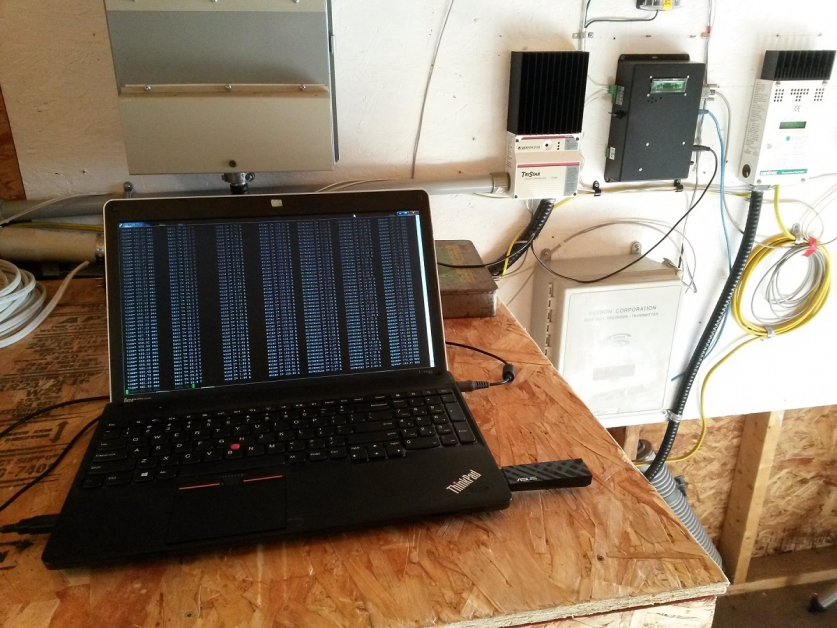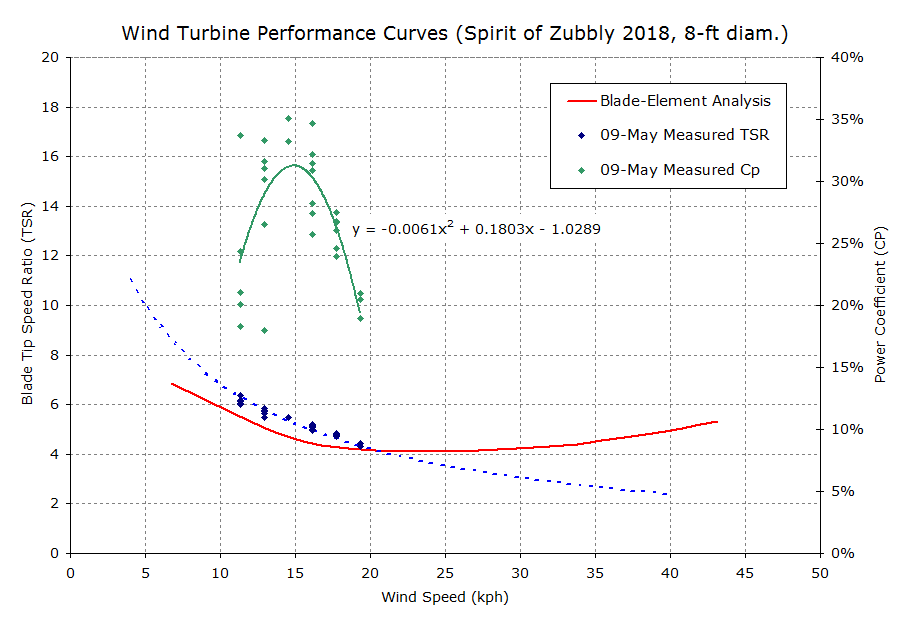Now that I have built a datalogger, I finally get some numbers to pore over. I probabaly enjoy doing this more than normal people do.
 Laptop collecting data from datalogger (black with LCD)
Laptop collecting data from datalogger (black with LCD)The logger pours out a continuous stream of RPM, voltage and current data. Occasionally record it. Number crunching takes some time so it's worth recording only when I have some time to sit down with it. When I do, I learn stuff. But, I should start at the beginning.
My first turbine (2007) had 8-foot blades and an axial alternator, which burned out pretty quick, because the blades were oversized for it. Then I converted a very old GE 3HP 3 phase motor (2008) and used the same blades. They were were still a bit oversized bu it didn't matter because the furling system worked and the GE motor could withstand a LOT of heat. Later (2011) I did a much better motor conversion on a Baldor 3-phase, and mated it up to the 8-foot blades. Once I got that one running, I noticed it behaved differently. The blades were quieter so it seemed an improvement from day 1.
Somewhere around 2012, I had the irresistable (and unexplainable) urge to do a lot of analysis, and figured out that the blades might be under-sized for the Baldor. Huh. That explained a lot, because after watching it for a year, even in strong winds they didn't really seem to be turning that fast, even if the furling was about to activate. At the time, I didn't have a tachometer, so no way to know how fast the blades were actually turning. Now that I have a datalogger, it turns out that the blades are stalled most of the time. They rarely go above 300 RPM and I have yet to record 400 RPM, even during some pretty strong winds. I could probably run it safely with no furling at all.
 Power Coefficient and TSR, Spirit of Zubbly with 8-foot blades, 9 May 2018
Power Coefficient and TSR, Spirit of Zubbly with 8-foot blades, 9 May 2018Here's how I figured it out. I collected RPM data simultaneously with the wind speed from the weather station, which is right next to the WT tower. With the RPM and the wind speed, averaged for a minute or 10 minutes (same result either way) I get the TSR plot shown above. While I have always known that the TSR around cut-in speed is pretty high (they spin unloaded up to cut-in), I am still surprised to see that the TSR of the blades continues to drop as the wind gets stronger. The TSR is not leveling off, like the analysis predicted, either. Anything below TSR=4 and my blades are mostly stalled, because they were carved for TSR=7. In the plot above, the Cp drops drastically when the wind is greater than 20 kph (12 mph). This is a pretty drastic mismatch between blades and generator.
So it's time I made some 10 foot blades for the Spirit of Zubbly. Stay tuned for some wood carving.